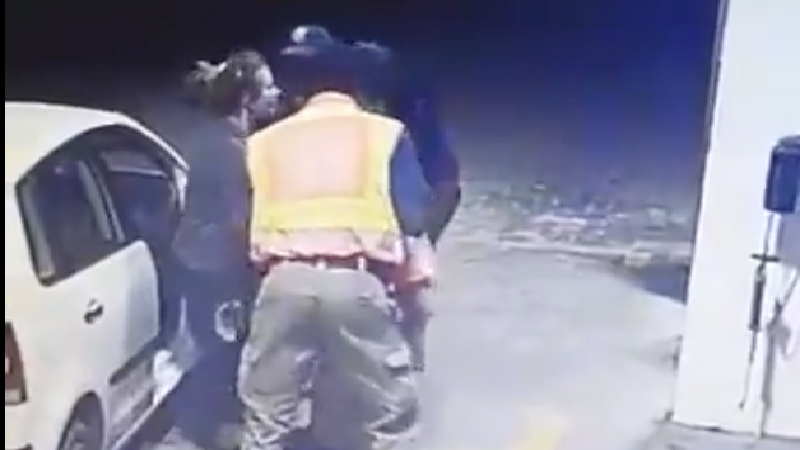South African law enforcement officials are once again in the public spotlight, only this time it’s due to what has been called out by some as an abuse of power against a woman too afraid to stop for blue lights until she was in the public eye.
The woman seen in the above video was reportedly signalled to pull over while driving in a dimly lit area by Tshwane Metro Police Department officials but feeling unsafe, opted to do so at a public space instead – in this case a garage. Once the woman seen in the video stopped her vehicle and opened her door, seemingly ready and willing to communicate and cooperate with the officials, they stormed the vehicle and attempted to drag her into their van. The woman resisted, at which point a bystander came to assist her. At the end of the CCTV footage, it appears as though the woman was eventually arrested and placed into custody.
Justice Project South Africa’s (JPSA) chairperson, Howard Dembovsky said the organisation is looking to get a redeveloped policy officially endorsed and filtered down to those responsible for the enforcement of the law on the ground to ensure that officials cannot get away with acts of abuse of power and intimidation – especially when South Africa’s circumstances make it difficult for law-abiding citizens to feel safe, even when approached by officials, under questionable circumstances and in potentially dangerous environments.
Following the recent incident, JPSA has withdrawn its endorsement of the blue light protocol introduced in 2013, saying that the protocol needs to be urgently redeveloped and finalised.
The protocol essentially outlines a procedure that motorists could follow when pulled over by officials to enable them to move away from an area they deemed unsafe to stop at when requested to do so.
BusinessTech explained that motorists were required to do the following in the protocol: slow down, put on hazards, indicate to the blue-light vehicle behind you to follow, and then calmly drive no faster than 40km/h to the nearest police station, or public space with CCTV coverage (typically a service station forecourt).
“The protocol was developed because of the prevalence of blue light gangs – who are a bunch of criminals which get blue lights, put them on vehicles and pull people over to commit (violent) crimes against them,” explained Dembovsky.
“There was a very strong necessity for it [the protocol] in 2013 because the crime was extremely prevalent… Since then, the landscape has transformed in that blue light gangs haven’t really diminished but a new type of threat has come about – and it comes in the form of legitimate law enforcement officials…”
“We face high levels of violent crime, high levels of individuals posing as police and the access to police paraphernalia like uniforms, badges and guns and even fully marked police vehicles is actually quite easy… There have been reports of fully marked SAPS response cars being impounded because they weren’t genuine police vehicles.”
Dembovsky said “the law needs to be tempered with practicality.”
“Yes, in black and white the law says you must stop. But if it’s going to endanger you, something has to be in place to address that problem.”
JPSA hopes to have the new protocol finalised this week.
VOC






 WhatsApp us
WhatsApp us 

